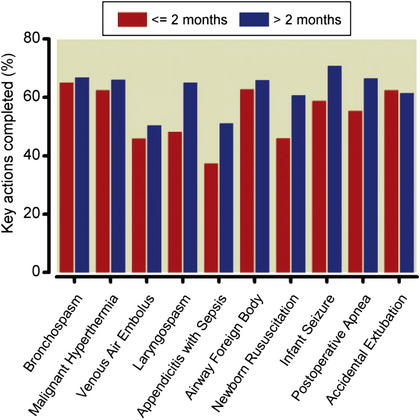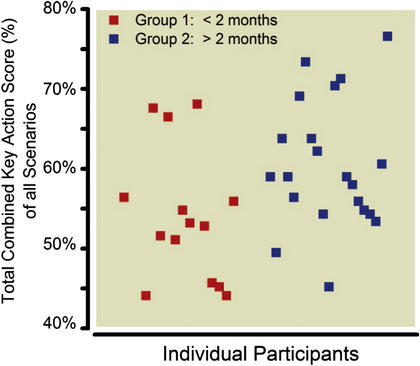Pediatric Anesthesia
Simulation-based Assessment of Pediatric Anesthesia Skills
Fehr JJ, Boulet JR, Waldrop WB, et al (Washington Univ School of Medicine, St Louis, MO; Foundation for Advancement of International Med Education and Res, Philadelphia, PA) Anesthesiology 115:1308-1315, 2011§
Evidence Ranking
• B
Expert Rating
• 2
Abstract
Conclusions
A multiple-scenario, simulation-based assessment of pediatric perioperative care was designed and administered to residents and fellows. The scores obtained from the assessment indicated the content was relevant and that raters could reliably score the scenarios. Participants with more training achieved higher scores, but there was a wide range of ability among subjects. This method has the potential to contribute to pediatric anesthesia performance assessment, but additional measures of validity including correlations with more direct measures of clinical performance are needed to establish the utility of this approach (Figs 1 and 2, Table 1).
Stay updated, free articles. Join our Telegram channel

Full access? Get Clinical Tree





